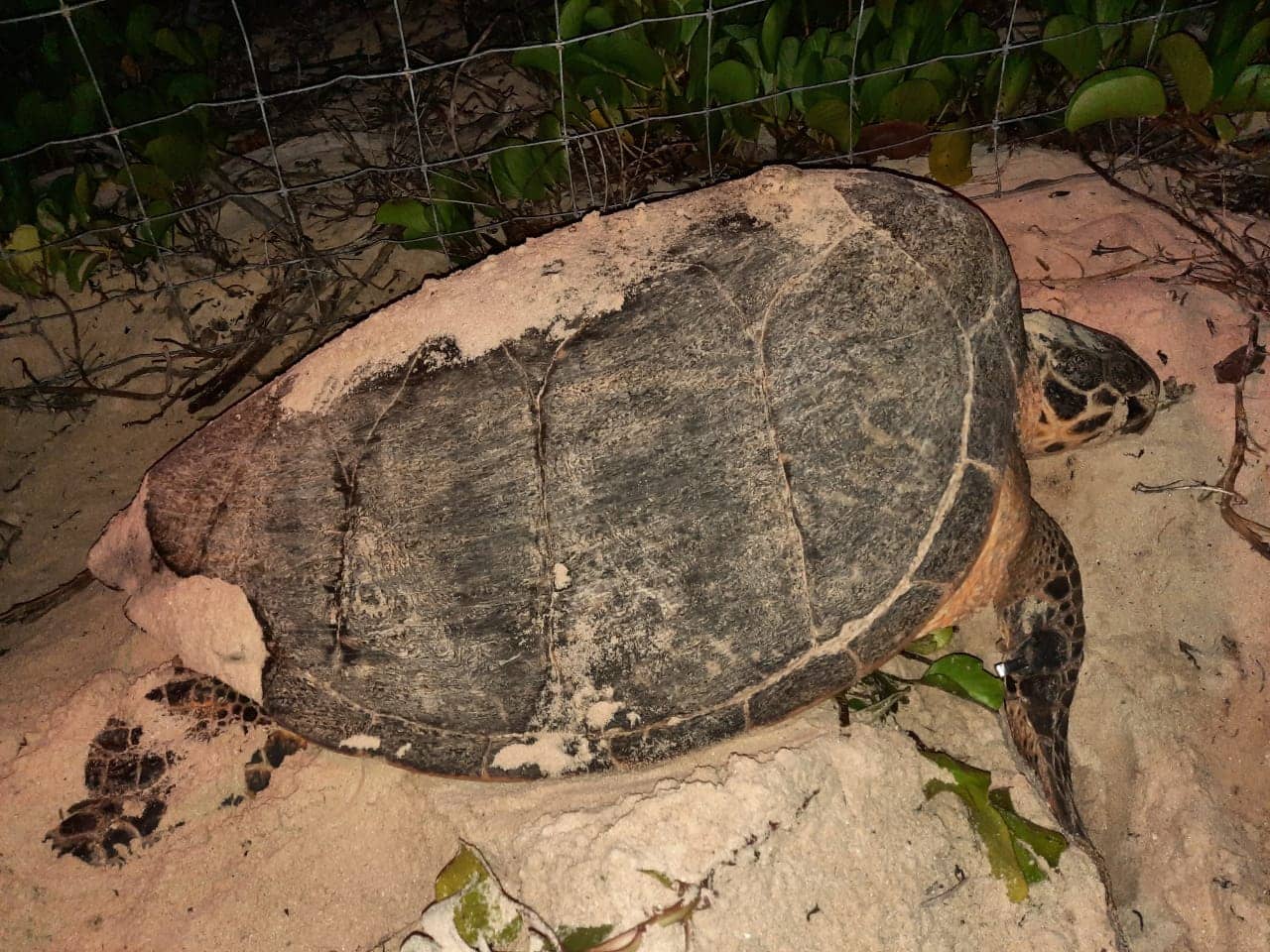
Saving the Barbudan Sea Turtles has been an ongoing project, which was started by Deborah Brosnan of Deborah Brosnan & Associates, an American environmental consulting company.
Presently, the project is under the leadership of Rishma Mansingh, of the Barbuda Fisheries Division.
This project is important for the safety and protection of these stupendous sea creatures. According to Project manager of Deborah Brosnan & Associates, Alanna Waldman, this environmental company provides great science and restoration works.
“This project started from scratch here in Barbuda, and it’s a locally run monitoring programme for the three different species of sea turtles that nest on Barbuda beaches”, Waldman said.
According to Waldman, the work performed was incredible and involved the measuring of female turtles, monitoring eggs and nesting sites, and protection for the hatchlings and insurance of their safe return to the sea.
When monitoring, they monitor ten (10) miles of shoreline three (3) to four (4) nights per week and this is being done for five (5) hours. They look for turtles, crawls and turtle nests.
When the turtle comes to shore and she starts to dig her nest chamber and deposit her eggs she goes into a trans and that is when she is tagged for navigation purposes only.
The length and width of the turtle is then measured, egg data is collected, and their crawls are measured as well as the distance from the nest to the high tide and the nest to the water line.
After all the data is collected, in sixty (60) days when the nest hatches they will go back to the nests where sometimes they are able to watch the turtles hatch. Once the hatchlings emerge and head to the ocean, they excavate the nest to find undeveloped eggs and unhatched eggs.
She expressed the necessity of the light provided by the moon to guide these newlyhatched turtles to the commencement of their life’s seabound journey and further explained the harm caused by artificial lights that would misdirect the hatchlings from taking the correct path from land to sea.
“Sometimes they do not make it back to the ocean because of other lights that distract them; they need to have the light from the moon to guide them back to the ocean,” Waldman explained.
With everyone onboard it is anticipated that this project will continue to be one of the forces in the quest of non-extinction of these magnificent sea animals.
Advertise with the mоѕt vіѕіtеd nеwѕ ѕіtе іn Antigua!
We offer fully customizable and flexible digital marketing packages.
Contact us at [email protected]
















